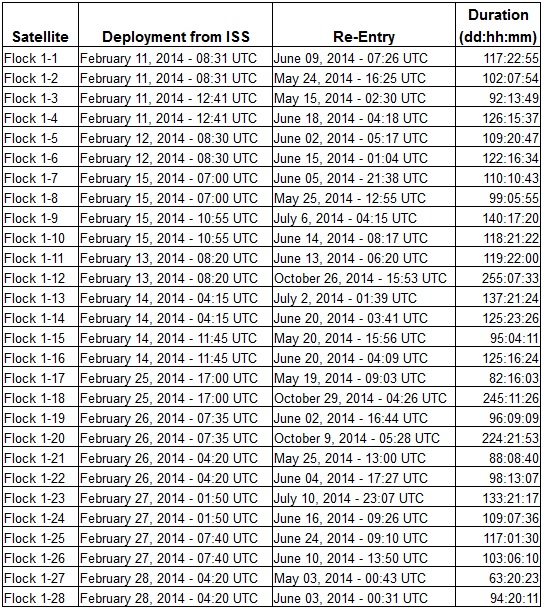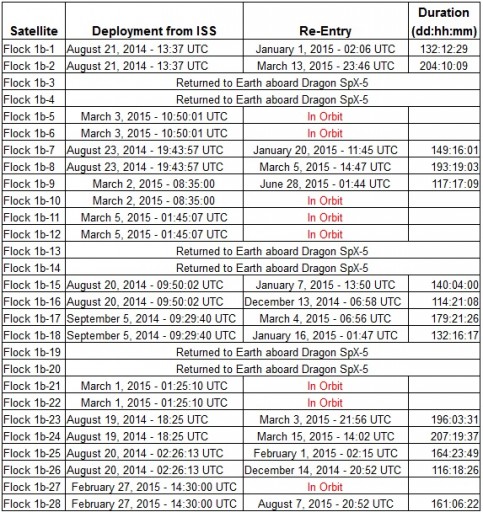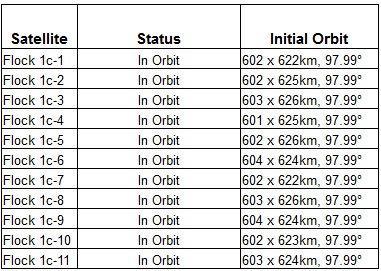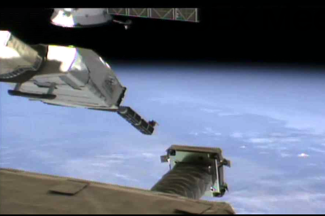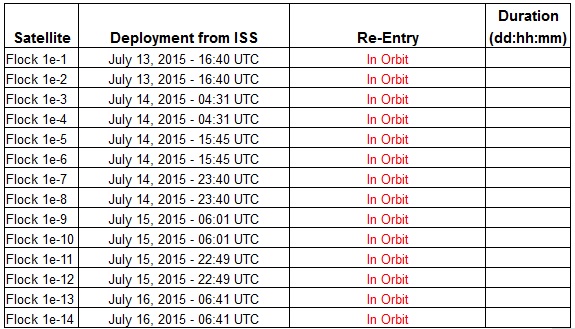Flock 1/2 – Planet Labs Earth Observation Satellites
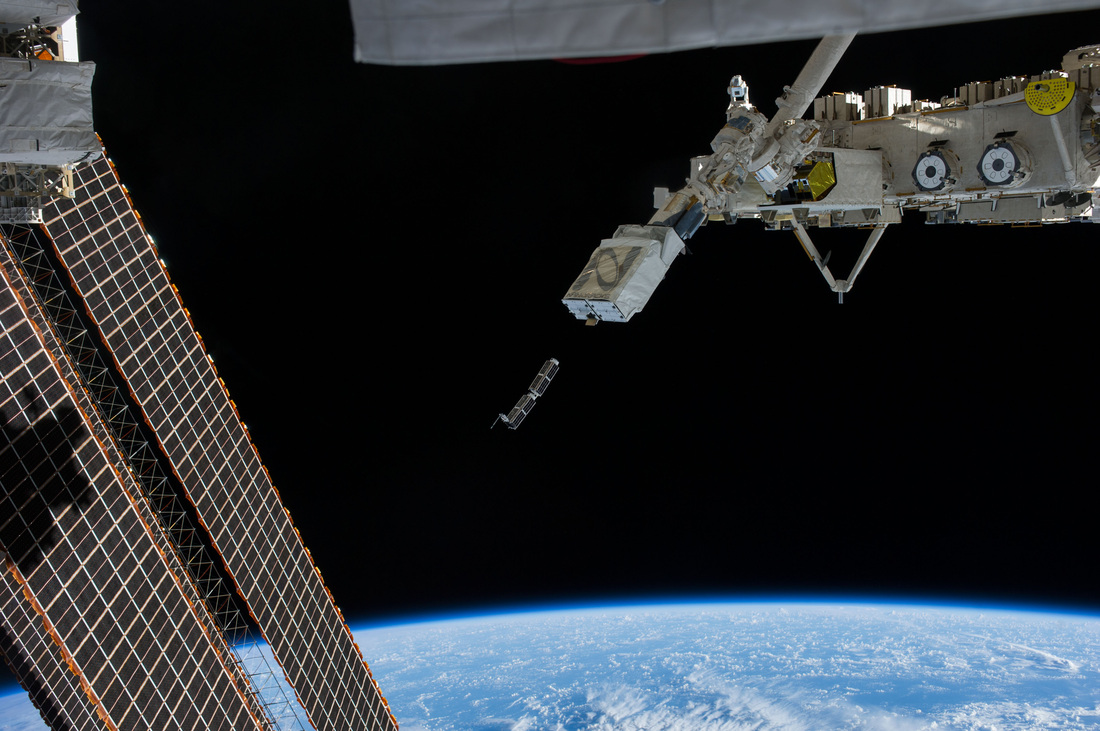
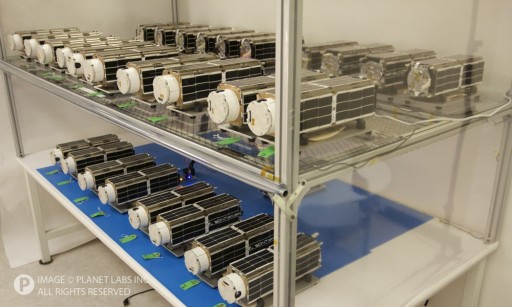
Flock 1 is a satellite constellation of CubeSats dedicated to Earth Observations using a fleet of small satellites to generate high-resolution images of Earth achieving resolutions of three to five meters. The operational constellation began deployment in 2014 and uses a combination of shorter and longer lived orbits being launched from the International Space Station and different orbital launch vehicles.
The satellites are designed, developed, manufactured and operated by Planet Labs based in San Francisco that markets the Earth Observation data products to a range of customers for a variety of applications.
The first four prototype satellites, designated Dove 1 through 4, were launched in 2013 to demonstrate the satellite bus and the imaging payload from different orbits as the Dove spacecraft were launched on different vehicles into lower and higher orbits. Dove-1 launched atop the Antares A-One Mission and Dove 2 was orbited by a Soyuz 2-1a rocket, both riding as a secondary payload and launching two days apart in April 2013. Dove 3 and 4 launched aboard the Dnepr rocket in November 2013 and completed the proof-of-concept, clearing the way for the deployment of the operational Flock 1 constellation.
The 28 Flock 1 satellites launched on January 9, 2014 aboard the Cygnus Spacecraft flying the Orb-1 mission to the International Space Station. Once delivered to ISS, the satellites were prepared for deployment via the NanoRacks CubeSat Deployers. All 28 Flock 1 satellites were deployed in February 2014 giving Planet Labs the largest Earth observation constellation ever deployed in orbit. Released into an orbit of just over 400 Kilometers, the satellites had a life expectancy of three to five months, starting to re-enter in May 2014.
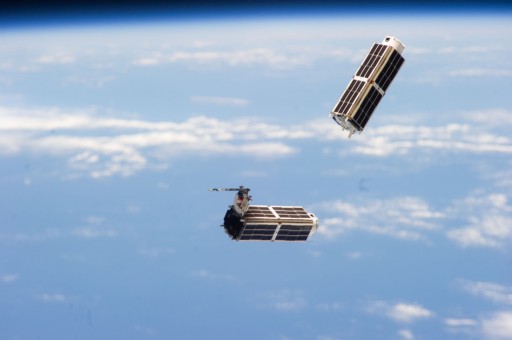
The Flock 1b constellation includes 28 satellites that were launched aboard the Cygnus Orb-2 mission for deployment from the International Space Station in the summer/fall of 2014.
In August 2014, issues with the NanoRacks CubeSat Deployer emerged showing symptoms of satellites not being deployed when commanded. Satellites were released uncommanded, however, the deployer remained in a safe position so that the inadvertent satellite deployments left the CubeSats on safe departure trajectories. As a result. the deployment campaign was suspended after 12 satellites were released to allow the crew aboard ISS to perform troubleshooting of the NRCSD latches. It was determined that some of the satellites would need to be returned to Earth inside their deployers for inspections.
Six satellites were flown back to Earth aboard the Dragon SpX-5 spacecraft while the remaining eight CubeSats were released in late February/early March.
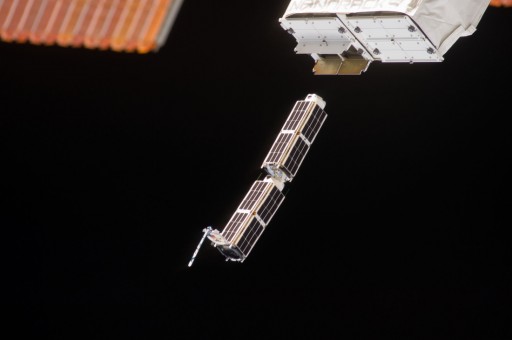
An 11-satellite Flock 1c constellation was lifted into orbit aboard a Dnepr Rocket in June 2014, establishing a polar-orbiting segment of the constellation as these satellites were deployed into a 98-degree orbit at ~620 Kilometers that is longer-lived than the ISS orbit.
26 Flock-1d satellites were lost in the launch failure of the Antares launch vehicle in October 2014 when an engine-related failure caused the vehicle to crash just seconds after liftoff. The Cygnus Orb-3 spacecraft was destroyed in the failure, however, remains of the satellites could be collected. Two upgraded replacement satellites were quickly shipped to Cape Canaveral to launch aboard the SpX-5 Dragon spacecraft. These two satellites were deployed on March 3, 2015 as part of the batch of remaining Flock 1b satellites and the GEARSSat, Lambdasat, TEchEdSat-4 and MicroMAS CubeSats, released from the same deployer. The next eight satellites to launch are designated Flock-1f to arrive at ISS on Dragon SpX-7 to be followed by a full 28-satellite constellation (Flock-1e) launching on the Cygnus Orb-4 spacecraft.
“Our company goal is to image everywhere very frequently, for everyone,” said Robbie Schingler, co-founder of Planet Labs. “If you image everywhere, then that actually means that you can image anywhere. That’s going to be quite transformative for a number of countries, for a number of companies, and so forth. Our monitoring capability is always on. We are always taking a picture.”
Spacecraft Overview
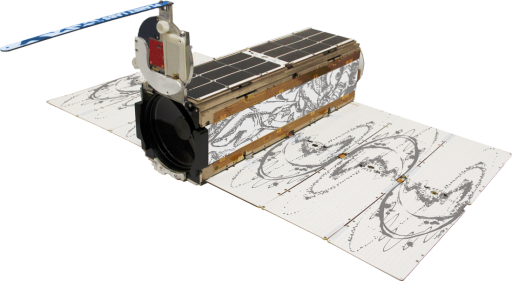
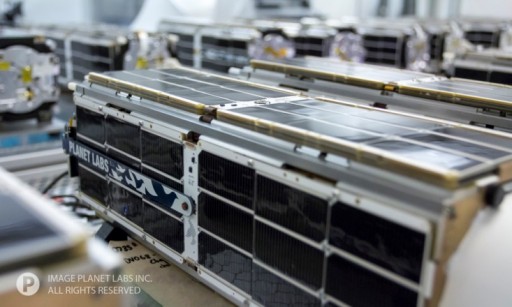
The Flock 1 spacecraft are based on the three-unit CubeSat specification having a launch mass of about 5 Kilograms and being 100mm × 100mm × 340mm in size featuring body mounted solar panels and two deployable solar arrays with three panels each using triangular advanced solar cells.
The solar arrays are spring-loaded and deployed by burn-wires once the satellites are released into their independent orbits. Flock spacecraft contain Lithium-Ion batteries that provide power to the various systems. A power distribution unit delivers power to all subsystems. The load bearing satellite structure consists of three skeleton plates, with L rails along each corner edge. Laser etched side panels are used for the Flock satellites.
Attitude data is provided by three-axis magnetometers to accomplish three-axis stabilization via a reaction wheel system and magnetic torquers for momentum management. Fine pointing data is provided by a Star Camera. Flock 1 satellites use a single-board computer to control all spacecraft and payload functions with a watchdog board able to reboot the flight computer in the event of errors or radiation related upsets.
The satellites use an X-Band system for the downlink of acquired images and systems telemetry at data rates of up to 120Mbit/s. Primary command uplink is done via S-Band, although a low-speed Telemetry and Command System operating in the UHF band is also available and in use for early commissioning operations and as a backup.
The main payload of each satellite is an optical telescope of unknown specifications to acquire high-resolution images of Earth. The telescope has an aperture diameter of 90mm and is protected by an aperture cover that is deployed via springs. The optical axis is down the central axis of the satellite to achieve a maximum focal length.
Deployment from ISS
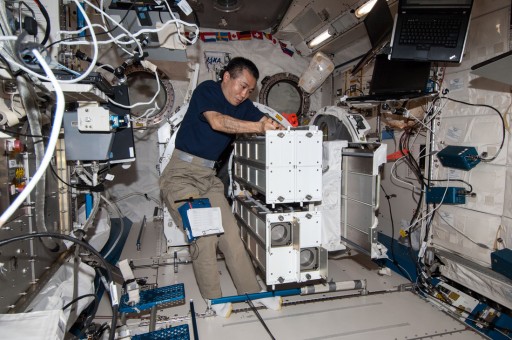
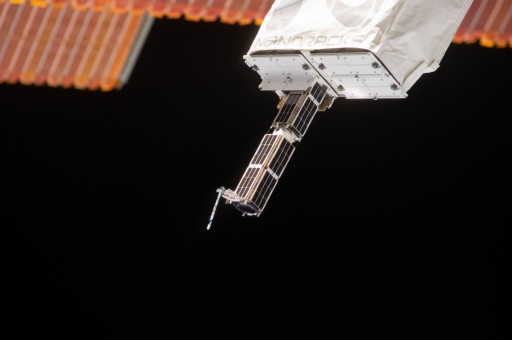
The Flock satellites deployed from the Space Station use a deployment mechanism supplied by NanoRacks. The System uses the Multi-Purpose Experiment Platform of the Japanese Experiment Module to which the NanoRacks CubeSat Deployers (NRCSDs) are attached. The dispenser holds up to sixteen three-unit CubeSats and is attached to the Multi-Purpose Experiment Platform (MPEP) that can be grappled by the Japanese Remote Manipulator System and deploy the satellites in pairs upon command issued from inside ISS or the JAXA Control Center in Tsukuba, Japan.
For a deployment, the platform is moved outside via the Kibo Module’s Airlock and slide table that allows the Japanese Robotic Arm to move the deployers to the correct orientation for the satellite release and also provides command and control to the deployers. Each NanoRacks CubeSat Deployer is capable of holding six CubeSat Units – allowing it to launch two 3U satellites or a number of 2U and 1U satellites. In total, eight NRCSDs were installed on the experiment platform. The Flock-1 satellites are launched in pairs with several pairs being launched per day.
The deployment trajectory has been precisely calculated to ensure the satellites would enter an orbit that does not intersect with ISS on any of the subsequent orbits to avoid collisions. Once the deployers are empty, the platform is moved back inside ISS so that it can be re-used for the next series of deployments.
Deploying CubeSats from ISS has a number of benefits. Launching the vehicles aboard the logistics carrier of ISS visiting vehicle’s reduces the vibration and loads they have to encounter during launch.In addition, they can be packed in protective materials so that the probability of CubeSat damage during launch is reduced significantly. Also, once arriving at the Space Station, the satellites can be checked pre-deployment, making sure any damage is detected before committing them to flight.
Dove Prototype Satellites
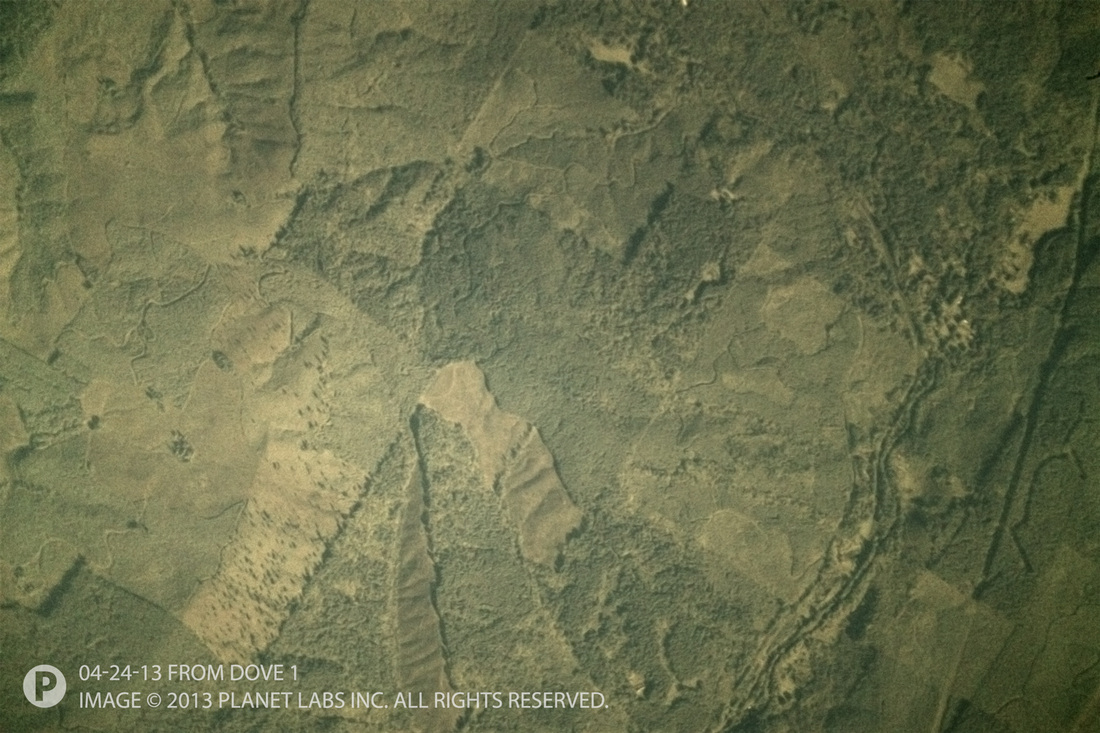
Flock 1 Constellation
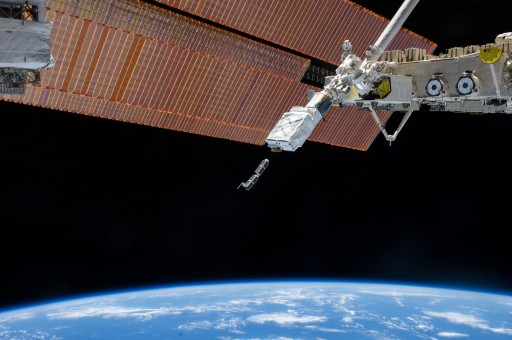
Number of Spacecraft: 28
Status: Completed Operations
Nomenclature: Flock 1-xx
Launched: Aboard Cygnus Orb-1 Spacecraft
Launch Vehicle: Antares 120
Launch Site: Pad 0A, MARS, Wallops Flight Facility
Launch Date: January 9, 2014 – 18:07 UTC
Deployed from ISS via NanoRacks Deployers Feb. 11-14 & 25-28, 2014
Deployment Orbit: Approx. 415 by 419km, 51.6°
Article: Initial Deployment
Article: Deployment Completion
Photo Gallery: Flock-1 Deployment
Flock 1b Constellation
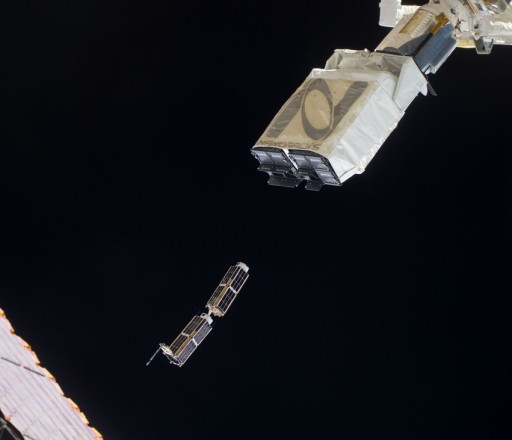
Number of Spacecraft: 28
Status: Partially Deployed, 6 Satellites returned to Earth due to issues with the NanoRacks CubeSat Deployer
Nomenclature: Flock 1b-xx
Launch: Aboard Cygnus Orb-2 Spacecraft
Launch Vehicle: Antares 120
Launch Site: Pad 0A, MARS, Wallops Flight Facility
Launch Date: July 13, 2014 – 16:52 UTC
.
Deployment from ISS: During Expedition 40 through 42
Deployed from ISS via NanoRacks Deployers: Starting August 19, 2014
Deployment Orbit: Approx. 411 by 419km, 51.6°
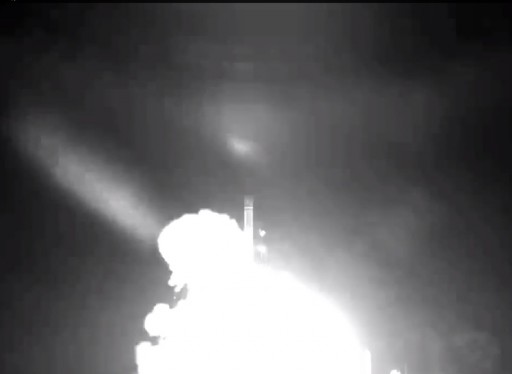
Flock 1c Constellation
Number of Spacecraft: 11
Status: Launched, Operational
Nomenclature: Flock 1c-xx
Launch Vehicle: Dnepr
>>>2014 Dnepr Cluster Launch Updates
.
Launch Site: Dombarovsky Air Base, Yasny, Site 370/13
Launch Date: June 19, 2014 – 19:11 UTC
Target Orbit: 606 by 623 Kilometers, 97.99°
Flock-1d Constellation
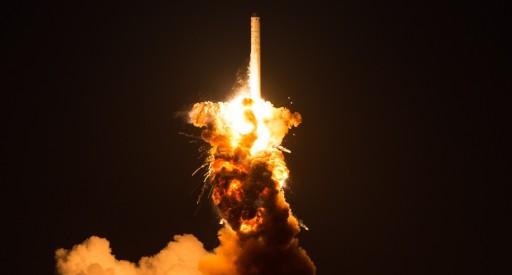
Number of Spacecraft: 26
Status: Destroyed in Launch Failure
Nomenclature: Flock 1d-xx
Launch: Aboard Cygnus Orb-3 Spacecraft
Launch Vehicle: Antares 130
Launch Site: Pad 0A, MARS, Wallops Flight Facility
Launch Date: October 28, 2014 – 22:22:38 UTC
Planned Deployment from ISS: During Expedition 42
.
Flock-1d’ Constellation
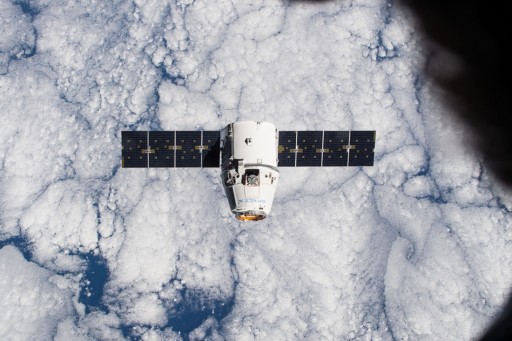
Number of Spacecraft: 2
Status: Deployed from ISS on March 3, 2015
Nomenclature: Flock 1d’-01, Flock 1d’-02
Launch: Aboard Dragon SpX-5 Spacecraft
Launch Vehicle: Falcon 9 v1.1 (F9R)
Launch Site: SLC-40, Cape Canaveral Air Force Station
Launch Date: January 6, 2015 – 11:20 UTC
Planned Deployment from ISS: During Expedition 42
Deployment Mechanism: NRCSD
Flock 1e Constellation
Status: Deployed from ISS, Operational
Nomenclature: Flock 1e-xx
Launch: Aboard Dragon SpX-6 Spacecraft
Launch Vehicle: Falcon 9Launch Site: SLC-40, Cape Canaveral Air Force Station
Launch Date: April 14, 2015
Deployment from ISS: July 13-16, 2015
Deployment Mechanism: NanoRacks CubeSat Deployer
Flock 1f Constellation
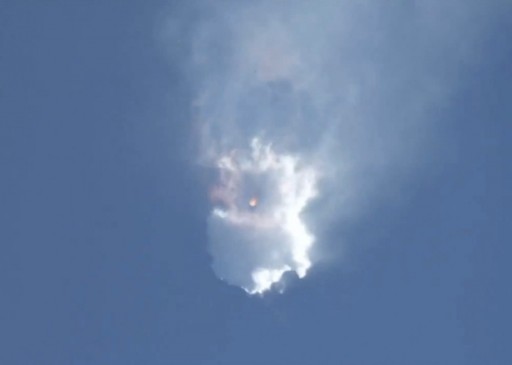
Number of Spacecraft: 8
Status: Destroyed in Launch Failure
Nomenclature: Flock 1f-xx
Launch: Aboard Dragon SpX-7 Spacecraft
Launch Vehicle: Falcon 9
Launch Site: SLC-40, Cape Canaveral Air Force Station
Launch Date: June 28, 2015
Planned Deployment from ISS: During Expedition 44/45
Planned Deployment Mechanism: NanoRacks CubeSat Deployer


